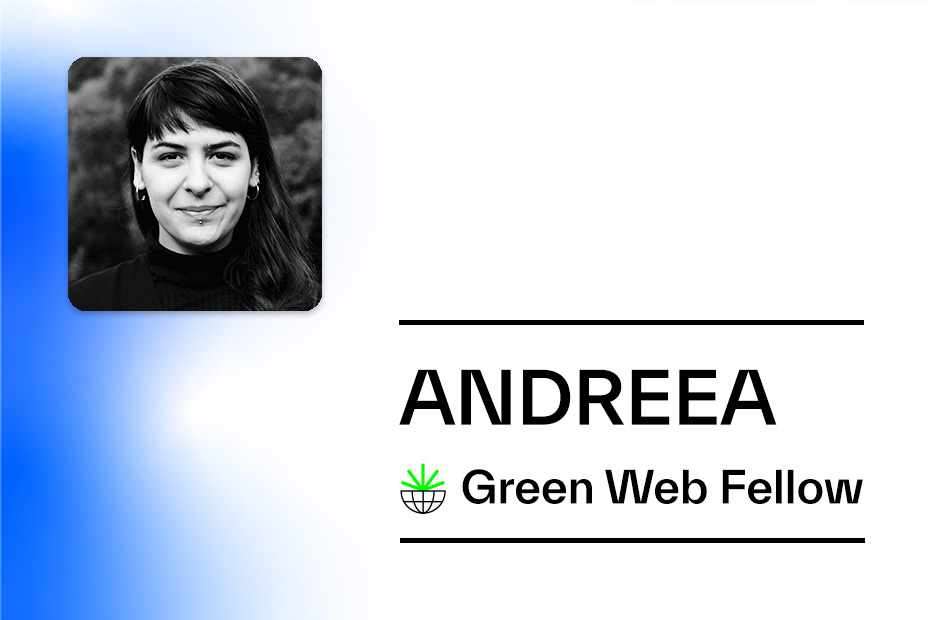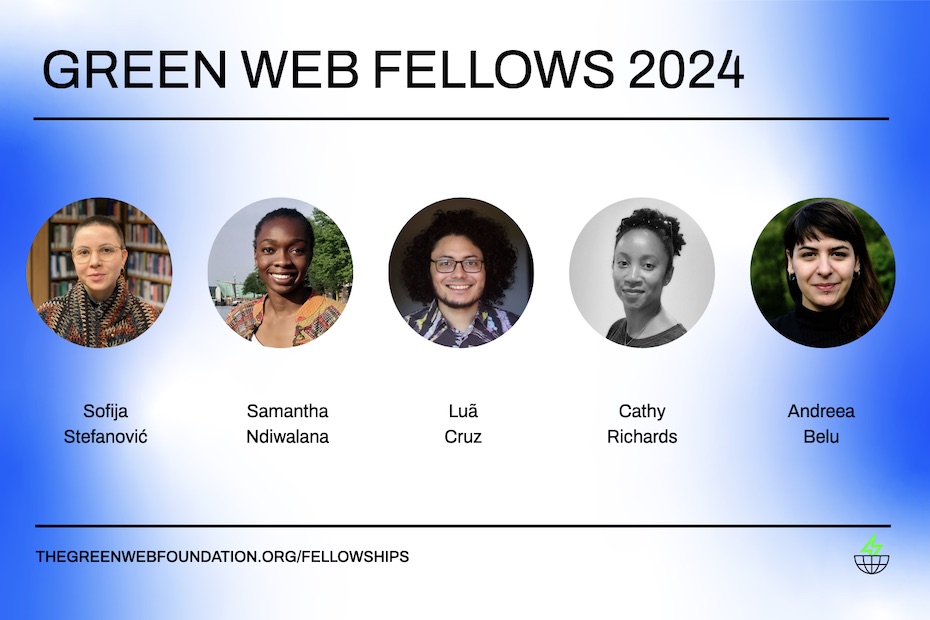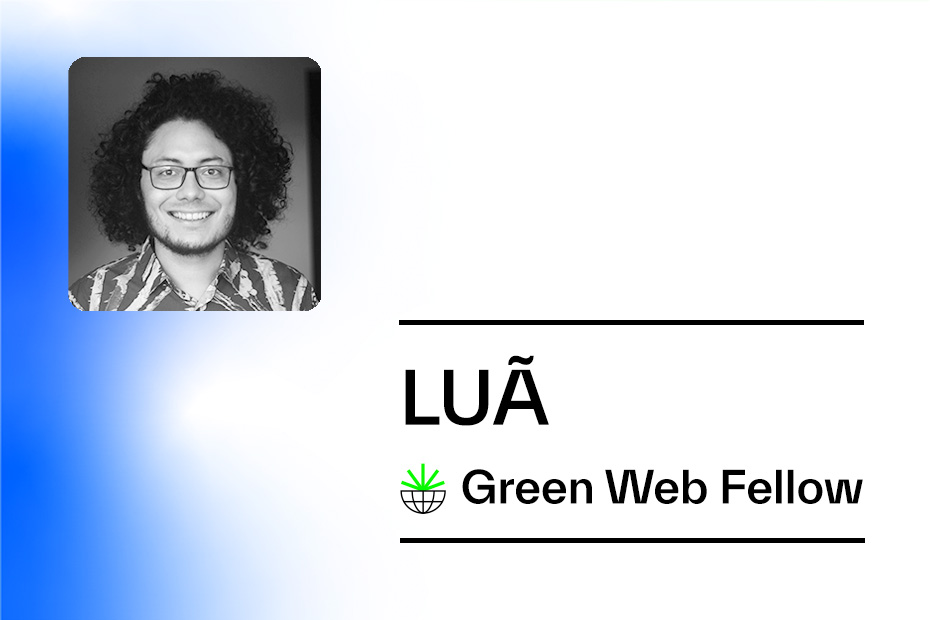In the present article I lay out the results of the desk research, and community interviews, following an initial media analysis of the news around the topic of “twin transition” in EU politics. In the first part, I detail three phenomena that influenced the “twin transition” narrative between 2019 and 2023. In the second, I provide a mapping of the main arguments revolving around the “twin transition” term in 2024.
As a recap, the media analysis I published some months ago looked into over 400 articles, op-eds and press releases, over four years. As I concluded this media scanning, I found myself with more questions than answers. In order for me to map and understand key terms and developments, legislative and non-legislative moments in the past years, as well as funding mechanisms, I went beyond the media scanning exercise. For this, I did my own desk research, but I also interviewed and corresponded with eleven people, working in EU politics, civil society and academics about notable political statements.
Who are the key actors driving the conversation? Initially, some of the key voices I identified as very vocal on the topic of “twin transition” were Commissioner for Internal Market Thierry Breton, Green Deal Commissioner Maroš Šefčovič, and Trade Commissioner Valdis Dombrovskis, the European Parliament as well as industry associations such as Digital Europe. While international organisations such as the OECD, WTO and UN influenced the EU narrative, they were outside the scope of my research. As I investigated the more recent years, I identified new voices that have entered the discussion: the European External Action Service (EEAS) and the European Defense Agency (EDA).
A pandemic, a war and trade tensions
My research notes how “strategic autonomy” and “economic security” were part of the key framing that allowed the discourse of twin transition to move towards the military domain. I found that the three major events allowing this shift between 2019 and 2023 were the COVID-19 pandemic, Russia’s attack on Ukraine and the China – US trade war.
Firstly, the COVID-19 pandemic showed that the EU’s model of just-in-time manufacturing / inventory of goods is fragile, as it relies on global supply chains which are subjected to worldwide political turmoil. The pandemic also affected a crisis for the supply of goods & materials needed for the EU’s twin transition, including green technologies. These – as any technology – semiconductors that were in shortage of supply and heavy demand. The pandemic was happening in a politically ambitious 2020, during which the EU was adopting its Green Deal and publishing its agenda to shape Europe’s digital future. Autonomy from global supply dependencies started to take shape as a discourse. Moreover, EU funding packages supporting the economic recovery from the pandemic were also directed towards the twin transition, and Ukraine aid in this way explicitly connecting economic security with the twin transition.
Secondly, Russia’s 2022 attack on Ukraine prompted EU’s political leaders to adopt in their public discourse the EU’s missing defense capacity and the lack of raw materials needed to produce – for example – missiles and ammunition. Again, shortage on the supply chain pointed to industry-level issues. Specifically, an immature, under-developed military industry. Flagging economic boycott as means of inter-state retaliation, voices within also pointed to solutions moving forward by using the “strategic autonomy” and “economic security” lingo.
For example, critical raw materials such as lithium became geopolitical. The European Commission also portrayed raw materials as a necessity for the green and digital transition, but also for defense and space. In parallel, defense actors as the European External Action Service and European Defense Agency confirmed the opportunities laying within the green and digital transition and committing agendas and funds towards their realisation. Examples include the European Defense Industry Program or the EU Strategic Compass for Defense, which recognised that “Decarbonising and making our economies more resource-efficient and circular come with specific security challenges, including access to critical raw materials, value chain management and sustainability, as well as economic and political shifts caused by the transition away from fossil fuels.” Under the Biden administration, NATO moved towards agendas promoting net-zero military operations and in Europe appeared more general questions around the greening of the EU military sector. In this way, the pursuit for “strategic autonomy and “economic security” through the twin transition also became interconnected with the development of the defense industry.
As of 2024, with a new European Parliament in place and a new Commission in the making, the commitment for the green agenda dropped substantially in favour of the military one.
Thirdly and in parallel, the growing trade war between US-China pressured Europe to take a side. Eventually, the EU positioned itself in support of the US and top political voices such as European Commissioner Margarethe Vestager pointed that green technologies such as wind turbines, electric vehicles are industries the EU must be in fair competing with China. The twin transition’s political significance grew – as a trade instrument. Vestager launched an investigation into China’s fast-growing and increasingly dominant wind turbine sector as well as electric vehicle sector. As the US’s Inflation Reduction Act (IRA) was seen by many as a protectionist move endangering its collaboration with Transatlantic allies, the EU launched in return its 2023 Green Deal industrial plan (Critical Raw Material Act and Net 0 Industry Act) meant to scale up manufacturing of net-zero tech in the EU, and secure needed supply chains. Despite the initial raffle between the EU and US around the US-state subsidies for electric vehicles threatening the EU market, in 2024 the EU increased tariffs on electric vehicles (EVs) from China up to 37.6% and showed its allegiance to the US, who increased these to 100% months before.
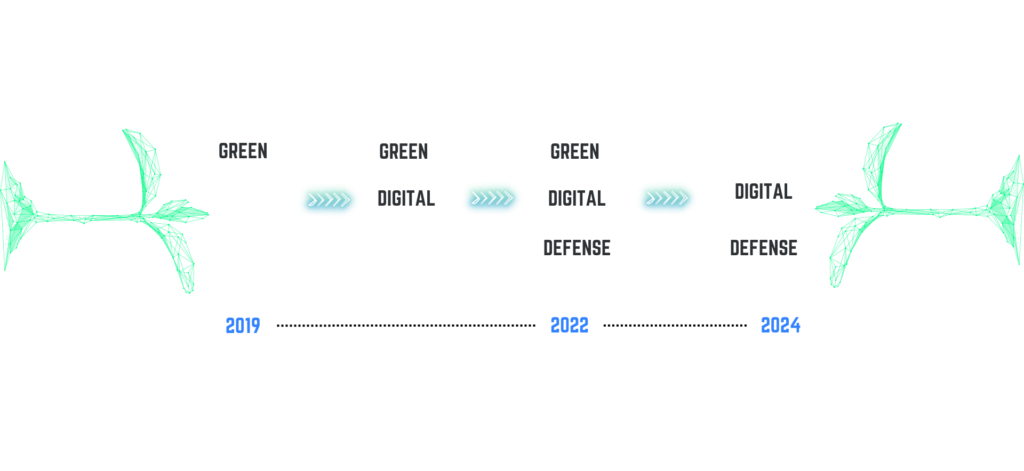
The graph above shows the morphing of narrative. Initially focused on the green transition under the Green deal, it shifted to one that promoted digital technologies as a key enabler to the green transitions. Starting 2022, I found in my research that the narrative gained a defense element. As of 2024, with a new European Parliament in place and a new Commission in the making, the commitment for the green agenda dropped substantially in favour of the military one.
Mapping the claims around the “twin transition” in EU politics
In the section above, I documented the changes of the Twin Transition narratives as a result of three notable phenomena. Below, I map the different arguments part of this narrative.
I have intentionally chosen to provide a mapping of the narrative, as a way to produce a useful resource for activists working to articulate narratives for alternative futures.
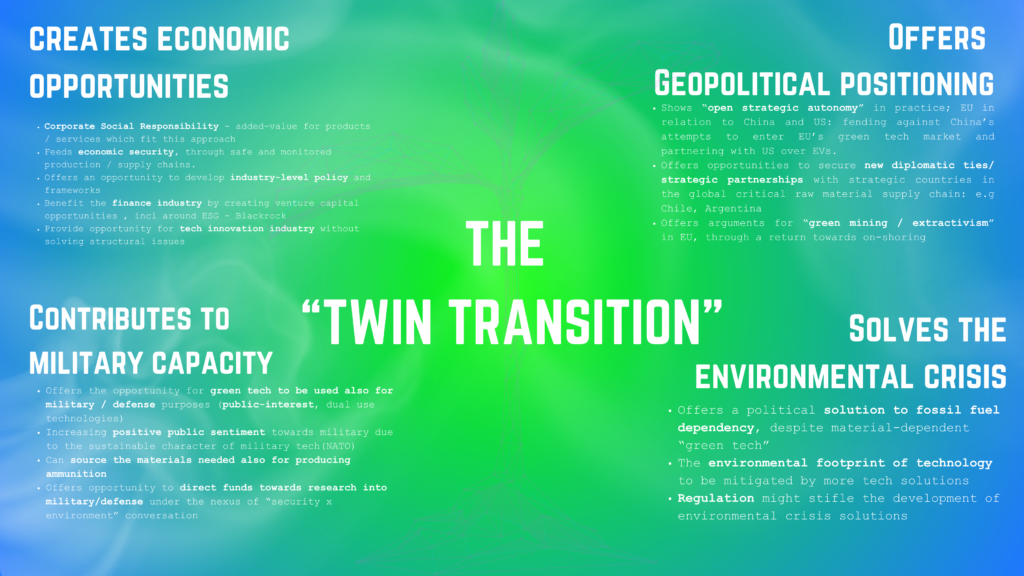
Organisations such as Superrr Lab recognise and promote the need for “futures literacy”, imagining worlds and stories beyond the status quo. They join a body of practitioners advocating for understanding and critically deconstructing the status quo, ahead of constructing alternative narratives.
Through my research, I aim to provide an understanding of the “status quo” around the twin transition’s political narrative. It is my hope that this resource can be useful to thoroughly deconstruct – from a feminist, and decolonial lense – the kind of futures promoted under the current “twin transition” agendas.
Overall, it provides at minimum a critical read for those in the environmental justice field, as well as those critically investigating the intersection of technology and society more broadly.
Mapping main arguments that shape the story of the “twin transition” in the past years has been a complex exercise, not least because terms were being (re-)invented and coined constantly, but also because in present times the narrative is in continuous formation. Therefore, please note that the mapping at the time of reading might not be exhaustive.
